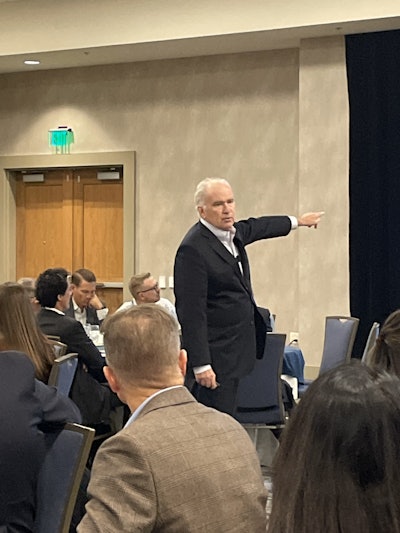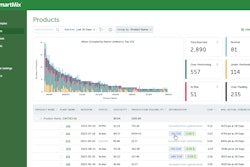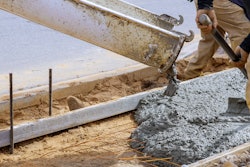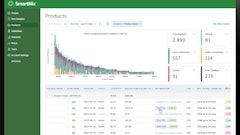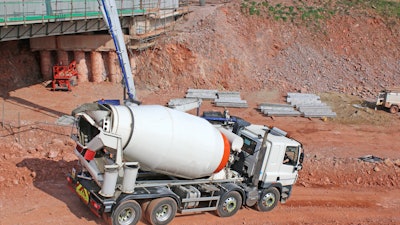
Presented during the Portland Cement Association's (PCA) fall meeting in Aurora, Colorado in early October, Ed Sullivan, the Chief Economist and Sr. Vice President of Market Intelligence for the PCA says the Federal Reserve’s recent move to lower interest rates coupled with easing inflation signals a significant retreat in interest rate levels by the end of next year…all to the benefit of construction activity. Founded in 1916, the PCA represents and serves America’s cement manufacturers through policy, research, education, and market intelligence.
Sullivan shared the industry’s economic forecast for 2025 with cement company leaders. As reported by an official PCA release, key points highlighted include:
 Ed Sullivan, Chief Economist and Sr. Vice President of Market Intelligence for the Portland Cement Association, presents at the PCA 2024 fall meeting.Portland Cement Association
Ed Sullivan, Chief Economist and Sr. Vice President of Market Intelligence for the Portland Cement Association, presents at the PCA 2024 fall meeting.Portland Cement Association- Mortgage interest rates are expected to decline to 5.5% by mid-2025 and to 5.0% by year-end 2025. This is likely to usher in favorable home affordability and a surge in consumer demand.
- Lower rates will also usher in a significant increase in the supply of existing homes on the market. This is expected to more than offset the increase in demand and lead to a reduction in new and existing home prices. This further enhances affordability.
- Nonresidential construction will also benefit from lower interest rates. Unfortunately, it will take time to improve occupancy rates and a higher Net Operating Income. These will come as the economy gains momentum next year. Given this, nonresidential is not expected to see recovery until 2026.
- Public construction activity is expected to benefit from increased spending associated with the Bipartisan Infrastructure Law.

